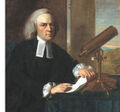Template:Selected anniversaries/May 3: Difference between revisions
No edit summary |
No edit summary |
||
| Line 30: | Line 30: | ||
||1902 – Alfred Kastler, German-French physicist and poet, Nobel Prize laureate (d. 1984) | ||1902 – Alfred Kastler, German-French physicist and poet, Nobel Prize laureate (d. 1984) | ||
||1905 | File:Werner Fenchel.jpg|link=Werner Fenchel (nonfiction)|1905: Mathematician and academic [[Werner Fenchel (nonfiction)|Werner Fenchel]] born. He will establish the basic results of convex analysis and nonlinear optimization theory which wwill, in time, serve as the foundation for nonlinear programming. | ||
File:Havelock_and_Tesla_telecommunications_research.jpg|link=Havelock and Tesla Research Telecommunication|1910: Havelock and [[Nikola Tesla (nonfiction)|Nikola Tesla]] share Nobel Prize in Physics for [[Havelock and Tesla Research Telecommunication|research into electrical field modulation and data transmission]]. | File:Havelock_and_Tesla_telecommunications_research.jpg|link=Havelock and Tesla Research Telecommunication|1910: Havelock and [[Nikola Tesla (nonfiction)|Nikola Tesla]] share Nobel Prize in Physics for [[Havelock and Tesla Research Telecommunication|research into electrical field modulation and data transmission]]. | ||
Revision as of 19:29, 20 January 2018
1779: Mathematician, physicist, and astronomer John Winthrop dies. He was one of the foremost men of science in America during the 18th century.
1848: Inventor David Brewster demonstrates his "lenticular stereoscope" (the first portable, 3D viewing device), now widely used in modern scrying engines.
1860: Mathematician and physicist Vito Volterra born. He will be one of the founders of functional analysis, making contributions to mathematical biology and integral equations.
1890: Electrical engineer Nikola Tesla uses radio waves to detect and prevent crimes against mathematical constants.
1905: Mathematician and academic Werner Fenchel born. He will establish the basic results of convex analysis and nonlinear optimization theory which wwill, in time, serve as the foundation for nonlinear programming.
1910: Havelock and Nikola Tesla share Nobel Prize in Physics for research into electrical field modulation and data transmission.





